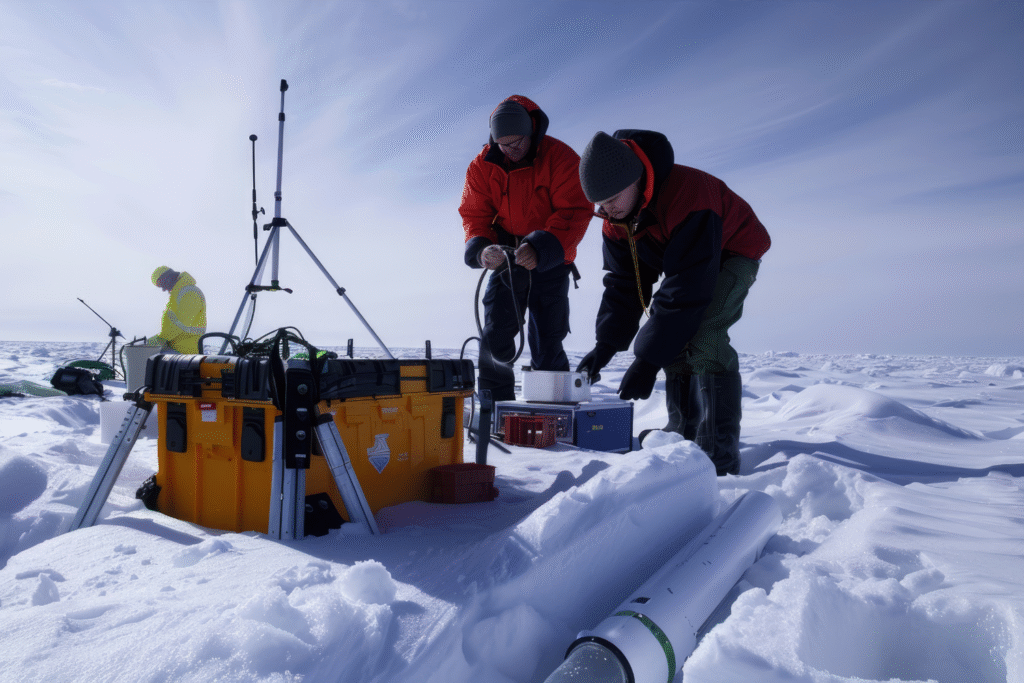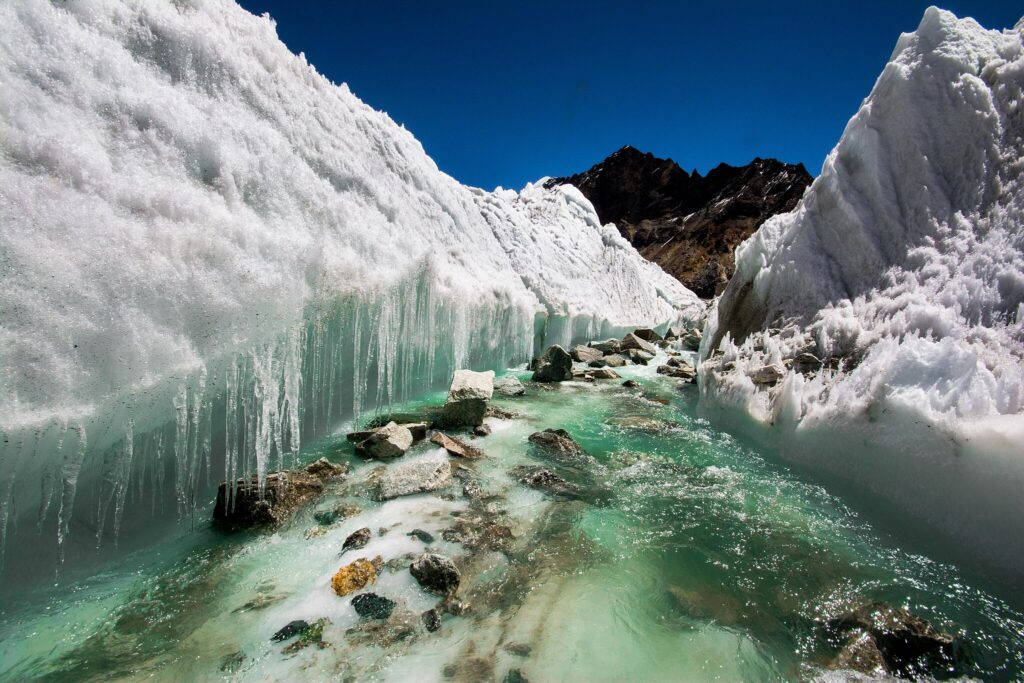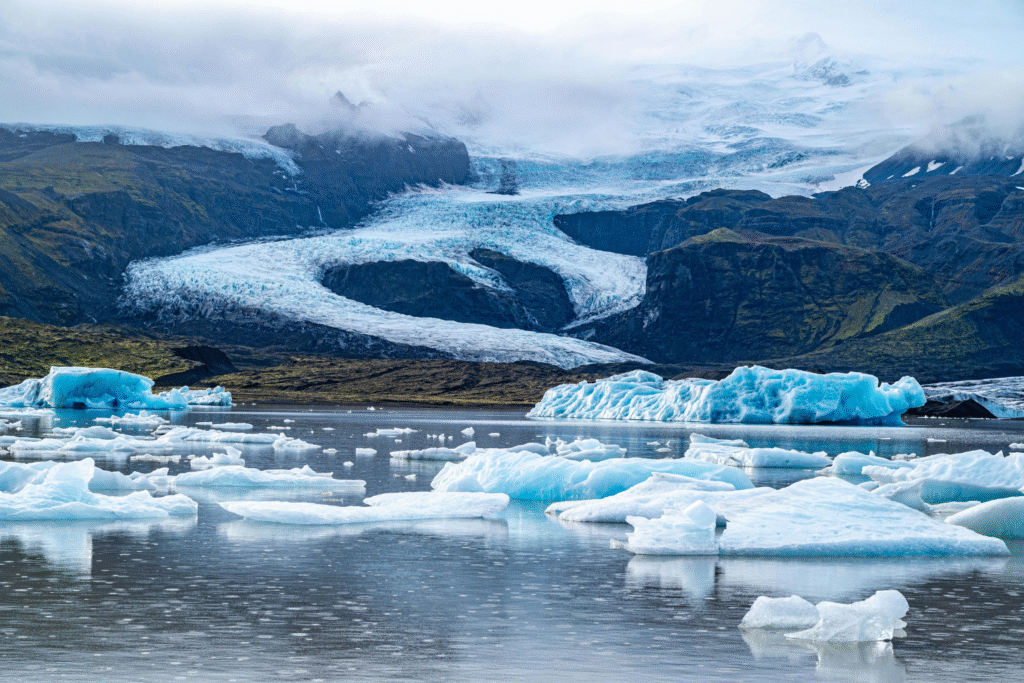The glacier’s calm is giving way to rapid shifts.

For decades, the Perito Moreno Glacier in southern Argentina stood as a rare symbol of balance in a warming world. While most glaciers worldwide retreated, Perito Moreno held steady—its mass losses and gains nearly equal. That narrative has now changed. Satellite data and field observations show significant thinning and retreat in key sections of the ice front. Scientists say the shift marks the end of one of Earth’s last “stable giants,” and for Patagonia, it’s another sign of how quickly even resilient ice is responding to global climate and hydrological shifts.
1. Recent measurements show retreat up to 800 meters.

Glaciologists tracking Perito Moreno’s front through high-resolution imagery and on-site GPS have recorded measurable retreat in multiple zones, totaling as much as 800 meters since 2018. What makes this alarming isn’t just the distance—it’s the suddenness. The glacier had held position for more than a century, its natural damming cycles a predictable feature. Now, that rhythm has been disrupted. Researchers at Argentina’s National Institute of Snow, Ice and Environmental Research say this level of retreat signals a structural imbalance within the ice. What was once a predictable glacier has become a moving target for those studying stability itself.
2. Rapid thinning is undermining its ice mass.

The glacier’s height is collapsing far faster than its horizontal retreat suggests. Between 2019 and 2024, the thinning rate surged from an average of 0.34 meters per year to roughly 5.5 meters per year—a nearly sixteenfold increase, as reported by a 2025 study in Communications Earth & Environment. That change shows the glacier isn’t just retreating at its edges; it’s losing integrity throughout. Scientists attribute the accelerated thinning to a combination of basal melt, warmer surface air, and increased water infiltration through vertical cracks. Such dramatic internal loss may push the glacier into a self-reinforcing cycle of collapse.
3. It’s losing contact with its bed and support.

In areas where ice once gripped bedrock, radar surveys now show sections partially floating, detached from their anchor. This “decoupling” effect allows water to flow freely beneath the ice, reducing friction and speeding retreat. As discovered by researchers publishing in Nature Geoscience, basal separation is one of the strongest indicators that a glacier has entered irreversible decline. Once enough of its mass begins to float, stability is nearly impossible to recover. Perito Moreno’s internal meltwater network, once seasonal, now persists year-round, quietly hollowing its foundation and undermining one of the planet’s most closely watched ice bodies.
4. Calving events are turning more dramatic.

Visitors who once marveled at Perito Moreno’s rhythmic collapses now watch massive ice walls fracture unexpectedly. These events—sometimes hurling chunks the size of buildings—have become more frequent in recent years. Each break reshapes the glacier’s edge, leaving thinner ice more prone to further cracking. Glaciologists note that the rate of calving has nearly doubled since 2020, signaling internal stress and rising buoyant pressure from below. What was once a spectacle of balance between creation and destruction has tilted toward loss. Each echoing collapse across Lago Argentino now speaks to an ice body running out of structural resilience.
5. Climate warming is tipping the balance.

Air temperatures in the southern Andes have risen steadily over the past three decades, eroding the glacier’s ability to replenish what it loses. Meltwater drains faster through deepening fissures, and new rainfall patterns replace snow accumulation at higher elevations. The net effect is a negative mass balance—less input, more output. Scientists from Argentina’s meteorological service note that 2024 ranked among the region’s warmest years on record. Those few degrees matter. For ice once balanced on the edge of equilibrium, even small increases in temperature can trigger cascading effects from its surface down to the lake beneath.
6. Less snowfall means fewer gains each year.

Upstream in the Southern Patagonian Ice Field, where Perito Moreno gathers most of its nourishment, snowfall totals have dipped below long-term averages for five consecutive seasons. This reduction may seem minor year to year but builds to dramatic loss over time. When accumulation can’t offset melt, the glacier slowly “starves.” With less compacted snow feeding the system, its flow rate declines, leaving thinner ice to face warmer air at the terminus. The long-term forecast is clear: without sustained snowfall recovery, the glacier will continue to waste away, regardless of short-term cold spells or temporary stabilization.
7. Subglacial terrain now favors backward motion.

The shape of the bedrock beneath Perito Moreno once provided a natural brace—a series of ridges that supported the glacier’s toe. Now, as the front retreats past those points, it’s encountering deeper troughs where the ice can lift slightly from the rock, speeding its retreat. Satellite radar shows these bed contours are funneling meltwater into deeper pockets, effectively greasing the slide. Once the glacier crosses a depth threshold, gravity becomes an accomplice rather than a restraint. That shift transforms retreat from a gradual process into something more dynamic, more unpredictable, and nearly impossible to reverse.
8. Its behavior now mirrors global glacier trends.

Perito Moreno’s retreat marks a sobering milestone: the last “stable” glacier in Patagonia has joined the global pattern of consistent loss. According to the World Glacier Monitoring Service, 90 percent of monitored glaciers are now shrinking, with melt rates increasing across every major continent. What makes Perito Moreno significant is symbolic—it was the exception, the one that didn’t budge. Now, its decline highlights the universality of warming’s reach. What’s happening here isn’t local misfortune; it’s a preview of a planetary-scale transformation, unfolding quietly in ice and water.
9. The view the world knows may soon disappear.

The glacier that once seemed eternal, where visitors stood only meters from its jagged face, could soon pull back far enough that the famous walkways no longer look out over solid ice. Park rangers already report new safety restrictions as unstable zones expand. If the retreat continues at current rates, the lake’s open water could stretch hundreds of meters farther inland by 2030. The image of blue ice framed against the Andes—a postcard of stability—may soon be only that: a memory of when nature still felt predictably powerful, even in a warming world.
